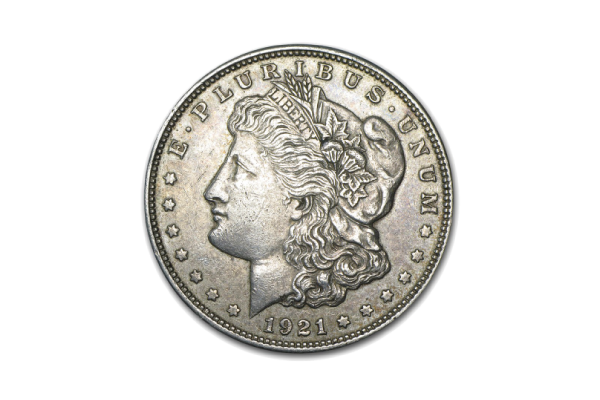Fundamental Principles
Example:
You have $100 face value of old silver Franklin Half Dollars (200 coins). You learn that that pre-1965 halves, quarters, and dimes have .715 Troy ounces of pure recoverable silver per dollar. Therefore you have 71.5 Troy ounces of silver as far as your potential dealer is concerned. You also looked up the spot price of silver from #1 above and it is $20/ozt. Now you know you have $1,430 (71.5 x $20) of pure silver. Wow!!
Now you go through your old gold jewelry and find out by the markings that all your items are 14 Karat or 58.5% (14/24K) pure. You weigh your items and they are about 54 grams. 54 grams times 58.5% pure = between 31 and 32 grams of pure gold. Since this is right at about a Troy ounce (31.1 grams), you again look up the spot price of precious metals and see that gold is $1,200 per ozt. Wow!!

How much does the value of your items rely on precious metal prices?
If you have bullion items such as gold or silver rounds, bars or ingots; it is all about the current spot price of those metals which can easily be found on the internet or stock market TV channels. Scrap jewelry (which is basically any jewelry short of something extremely vintage or owned by Elvis) falls into this category, too. With today’s metals prices so high, the vast majority of silver coins fall into this category, too. There is much more on this under What is Valuable as well as my FAQs / Glossary sections.

If your coins, jewelry, and other valuables do contain precious metals, you need to have an idea how much of the pure metal is in your items measured in Troy ounces. Coins are easy because they are made by government specifications. Jewelry is a little more tricky because the purity varies greatly, there may be parts that are stones or non-precious metal, and you need some basic tools such as a magnifying glass and a scale (not to worry, these items are cheap to buy or can be borrowed).

Don’t expect the full spot price of the metals.
Based on the 2 examples in #2 you are “armed” with information and ready to walk into the nearest coin shop and demand $2,630 for your coins and gold. Well, here’s the reality. Even dealers such as me don’t get the full spot price of the metals when we sell them…plus we have shipping and insurance, and we would like to make a reasonable profit to cover our time and overhead. So what is a fair percentage to be paid? A friend of mine with a large coin shop a few states away told me that for coins he pays 70% of the spot price for quantities of $500 face value or less; 80% for between $500 and $1,000 face value, and 90% or more of spot price for $1,000 or more of face value silver coins.
This is not a formula that I use, but I use it as an illustration of how some dealers operate. I tend to pay towards the higher range, because I have lower overhead than a large shop. Be warned, however, that I have seen gold shops and traveling shows in my area pay as low as 30% or about $800 for such a collection. That’s not “wow”…that’s “ouch!”
There are rare or “key date” coins that, for a variety of reasons,
are worth way more than the precious metal content. This also applies, of course, to coins (and currency) that don’t contain precious metals. These items are well documented in many publications such as The Red Book of United State Coins. Because these books are often outdated by the time they hit the shelf each year, it’s important that your dealer has frequent updates such as the ANA’s weekly “Greysheet” Coin Dealer Newsletter. Your dealer should have printed and/or online resources for every type of item that they purchase.

An experienced dealer will know much of this off the top of his or her head, but you should feel comfortable to ask a dealer to share the pertinent reference materials with you at your request. It keeps the dealer honest plus it is interesting to see which coins bring the really big bucks.

Inventory your coins beforehand,
especially if you leave or consign your coins to the dealer. More than likely you will go through your coins immediately if you drop them off (as opposed to a mail in estimate). The dealer should have his own receipt/inventory sheets to catalog your collection. Any rare coins should be identified right away and given a grade based on the ANA Official Grading Standards book. I even have a nice iPhone app that is very useful for assessing a grade. If a coin is identified as a potentially very valuable coin, don’t object to the coin being sent to a professional grading service such as PCGS or NGC.
They can insure that the coin is not fake or altered (which unfortunately happens with all high value coins), and also assign an accurate grade and preserve the coin in an airtight holder.
Hopefully this page is helpful without being too confusing. After all, when you are looking for a trusted professional to sell coins and other valuables too, you are really the consumer in that you are purchasing a service. You are really the “buyer” so beware and good luck!
Address
Office hours are by prearranged appointment only. This is not a walk-in service.
Galesburg Coin and Collectibles
David Webster - Owner
2505 Costa Drive
Galesburg, IL 61401-1226
Phone
Phone: 309-344-1987
(9 am to 6 pm Monday through Saturday or email ANYTIME)
Mobile Phone: 309-368-1799
(Mobile forwards directly to answering / scheduling service during tax season.
Please use main phone only from January 15th to April 15th.)
Email: GalesburgCoins@comcast.net

